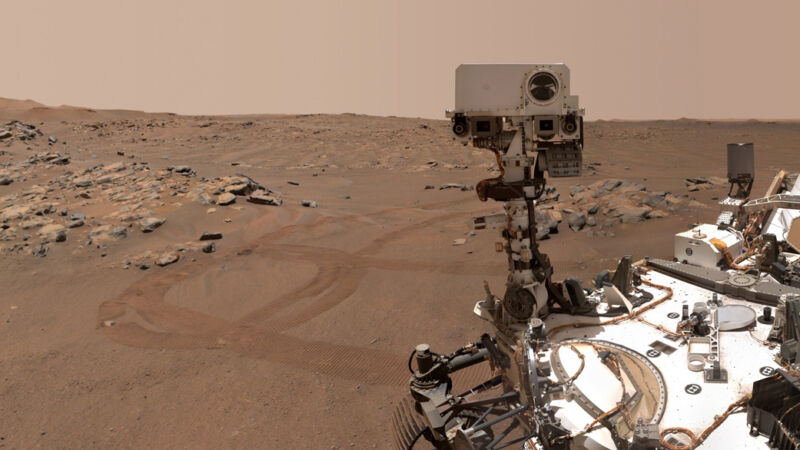
The Perseverance rover landed in Mars' Jezero Crater largely because of extensive evidence that the crater once hosted a lake, meaning the presence of liquid water that might once have hosted Martian life. And the landing was a success, placing the rover at the edge of a structure that appeared to be a river delta where the nearby highlands drained into the crater.
But a summary of the first year of data from the rover, published in three different papers being released today, suggests that Perseverance has yet to stumble across any evidence of a watery paradise. Instead, all indications are that water exposure in the areas it explored was limited, and the waters were likely to be near freezing. While this doesn't rule out that it will find lake deposits later, the environment might not have been as welcoming for life as "a lake in a crater" might have suggested.
Putting it all together
Perseverance can be considered a platform for a large suite of instruments that provide a picture of what the rover is looking at. Even its "eyes," a pair of cameras on its mast, can create stereo images with 3D information, and offer information on what wavelengths are present in the images. It also has instruments that can be held up to rocks to determine their content and structure; sample-handling hardware can perform a chemical analysis of materials taken from rocks.
While the new information is divided into separate papers based on the instruments the data came from, the key thing is that all three paint a consistent picture and build off each other.
For example, the spectroscopy tools provide details of a sample's chemical composition but they don't tell us how those chemicals are distributed in a rock. In contrast, there are X-ray analysis tools that offer inexact chemical information, but they tell us how the chemicals it detects are located compared to the rock's visible features. And the cameras on the rover's mast can help us identify how widely distributed similar rocks are.
Collectively, these tools tell us that Perseverance sampled rocks from two different deposits so far. The first includes the crater floor where it landed, which is rich in iron- and magnesium-based minerals. Above that is a separate formation that appears to be volcanic rock, although we can't rule out that it was formed by rock liquified following an impact.
Both deposits were clearly shaped by processes we know are happening on Mars. Many of the rocks have been shaped by the wind and may have experienced some chemical alterations due to the atmosphere or radiation exposure. In places shadowed from the wind, loose regolith has built up, much of it with Mars' characteristic red tint. There's also a variety of debris from impacts, including some smaller ones within the Jezero crater.
But the big question is whether the materials show indications that water was present. The answer there is a bit of a "yes, but..."



3175x175(CURRENT).thumb.jpg.b05acc060982b36f5891ba728e6d953c.jpg)

Recommended Comments
There are no comments to display.
Join the conversation
You can post now and register later. If you have an account, sign in now to post with your account.
Note: Your post will require moderator approval before it will be visible.